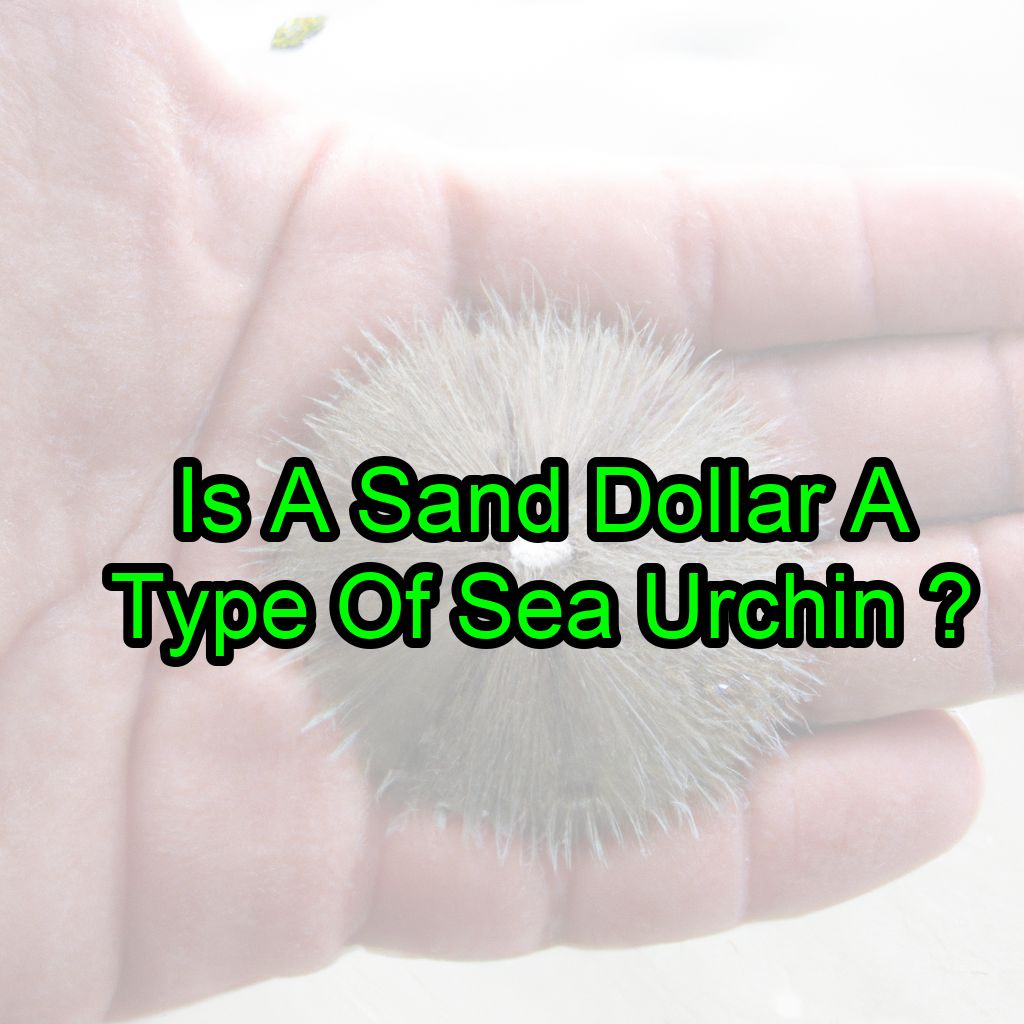When it comes to marine life, there are many fascinating and unique creatures that inhabit our oceans. Two of the most well-known are the sand dollar and the sea urchin.
Yes, a sand dollar is a type of sea urchin. Both sand dollars and sea urchins belong to the class Echinoidea within the phylum Echinodermata. Sand dollars are a flattened, disc-shaped type of sea urchin, adapted for burrowing and living in sandy environments.
While they may look similar, many people wonder if they are actually the same thing. In this blog post, we’ll explore the differences and similarities between these two creatures to answer the question: Is a sand dollar a type of sea urchin?
What is a Sand Dollar?
Sand dollars are a type of echinoderm that belong to the same family as sea urchins, starfish, and sea cucumbers.
They are flat, round, and have a distinctive five-pointed pattern on their surface.
Sand dollars are found in shallow waters along coastlines around the world, where they burrow into the sand and feed on small particles and detritus.
Some key features of sand dollars include:
- A hard, round skeleton made of calcium carbonate
- A flattened shape that allows them to move along the ocean floor
- A distinctive pattern of five petal-like structures on their surface
- A mouth located on the underside of their body that is used for feeding

What is a Sea Urchin?
Sea urchins are also echinoderms and are closely related to sand dollars.
They have a spherical or oval-shaped body that is covered in long, spiny protrusions.
Sea urchins are found in a variety of habitats, from shallow waters to deep sea trenches, and feed on a range of foods including algae, small invertebrates, and even dead fish.
Some key features of sea urchins include:
- A hard, spiny shell made of calcium carbonate
- A spherical or oval-shaped body that can be up to 10 cm in diameter
- Long, sharp spines that are used for protection and movement
- A mouth located on the underside of their body that is surrounded by five tooth-like structures
What are the Differences Between Sand Dollars and Sea Urchins?
While sand dollars and sea urchins have many similarities, there are some key differences that set them apart.
Here are a few of the most notable:
- Shape: Sand dollars are flat and round, while sea urchins are spherical or oval-shaped.
- Spines: Sand dollars have short, tiny spines that are used for movement, while sea urchins have long, sharp spines that are used for protection.
- Feeding: Sand dollars feed on small particles and detritus, while sea urchins feed on a range of foods including algae and small invertebrates.
- Habitat: Sand dollars are typically found in shallow waters along coastlines, while sea urchins can be found in a variety of habitats including shallow waters and deep sea trenches.
- Mouth Structure: Sand dollars have a simple, slit-like mouth located on the underside of their body, while sea urchins have a complex structure of teeth and jaws that surround their mouth.
So, Is a Sand Dollar a Type of Sea Urchin?
While sand dollars and sea urchins are both echinoderms and share many similarities, they are not the same thing.
Sand dollars are a type of flattened, burrowing echinoderm that feed on small particles and detritus in shallow waters, while sea urchins are a type of spherical or oval-shaped echinoderm that feed on a range of foods and can be found in a variety of habitats.
In conclusion, while both sand dollars and sea urchins are fascinating and unique creatures, they are not the same thing.
By understanding the differences and similarities between these two creatures, we can better appreciate the diversity of life that exists in our oceans.




